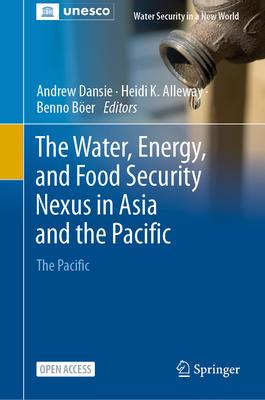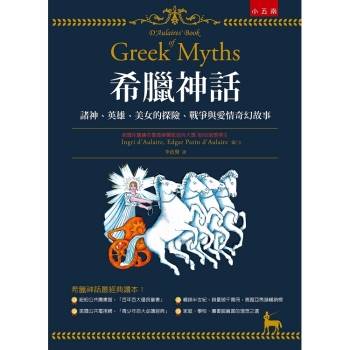This open access book considers the water, energy, food (WEF) nexus in the Pacific region. The region comprises seventeen sovereign countries and seven territories spread across the Pacific Ocean, a blue expanse that covers a fifth of the world’s surface area but contains only 0.5% of the population--or 44.5 million people. The uniqueness of the Pacific and the need for a Pasifika-led approach to sustainability across environmental, societal and economical spheres requires this blue continent to be considered in a separate volume under the ’Water Security in a New World’ series.
This Pacific volume is focussed on water, energy and food security in Pacific Island Countries and Territories (PICTs) and the challenges produced by the impacts of anthropogenic climate change and human population pressures. The diversity of culture, traditional knowledge and ways of life across the Pacific are united by similar geographies and opportunities to apply a ’Pacific specific’ WEF nexus approach; a coordinated approach to manage water, energy and food that is centred on active decision making across the three sectors to increase the security of each. Importantly, a WEF nexus approach builds on national and international efforts to date in the Pacific which include Integrated Water Resource Management, Ridge to Reef, Source to Sea, UNESCO Biosphere Reserves, Integrated Coastal Zone Management and other similar approaches.
In this book, contributions by authors from governments, regional bodies, multilateral agencies, and academia describe water security and its intersectionality with both the energy and food sectors, highlighting the significance of both land and marine food systems and connectivity between water and energy in a Pacific-focussed context. It is demonstrated that these systems cannot be separated from the challenges associated with healthy environments and functioning ecological services, transport, and waste that are unique to this vast archipelagic region. To achieve meaningful change, it is essential that solutions are cognizant of the world’s colonial past and the global inequalities that persist today. The path forward for water and food systems is one that is Pasifika-led and builds on traditional knowledge and local capacity. National energy demands must consider the future with solutions comprising both WEF-integrated approaches and new energy technologies to hasten the transition away from fossil fuels. Globally, major greenhouse gas emitters both past and present need to step up for the environmental and economic benefit of all by rapidly reducing greenhouse gas emissions and supporting Pasifika leadership on highly ambitious net zero goals.
This book is a highly recommended source of information and inspiration for policy makers, decision makers, research communities and practitioners dealing with any aspect of water, energy, or food security in the Pacific.
| FindBook |
有 1 項符合
The Water, Energy, and Food Security Nexus in Asia and the Pacific: The Pacific的圖書 |
 |
The Water, Energy, and Food Security Nexus in Asia and the Pacific: The Pacific 出版社:Springer 出版日期:2024-04-16 語言:英文 規格:精裝 / 普通級/ 初版 |
| 圖書館借閱 |
| 國家圖書館 | 全國圖書書目資訊網 | 國立公共資訊圖書館 | 電子書服務平台 | MetaCat 跨館整合查詢 |
| 臺北市立圖書館 | 新北市立圖書館 | 基隆市公共圖書館 | 桃園市立圖書館 | 新竹縣公共圖書館 |
| 苗栗縣立圖書館 | 臺中市立圖書館 | 彰化縣公共圖書館 | 南投縣文化局 | 雲林縣公共圖書館 |
| 嘉義縣圖書館 | 臺南市立圖書館 | 高雄市立圖書館 | 屏東縣公共圖書館 | 宜蘭縣公共圖書館 |
| 花蓮縣文化局 | 臺東縣文化處 |
|
|
圖書介紹 - 資料來源:博客來 評分:
圖書名稱:The Water, Energy, and Food Security Nexus in Asia and the Pacific: The Pacific
內容簡介
Examining Net Zero: Creating Solutions for a Greener Society and Sustainable Economic Growth
Environmental Economics and Ecosystem Services
Environmental Economics and Ecosystem Services
Bankrolling Empire: Family Fortunes and Political Transformation in Mughal India
Advances in Relational Economics: Theoretical, Methodological, Philosophical and Empirical Foundations
Resource Management Performance: A Sectoral Analysis in the Post-Conflict Kurdistan Region of Iraq
Total Garbage: How We Can Fix Our Waste and Heal Our World
The Financial Markets of Roman Egypt: Risk and Return
Non-Market Valuation in South Asia: Bridging Theory and Practice in Environmental Economics
The Myth That Made Us: How False Beliefs about Racism and Meritocracy Broke Our Economy (and How to Fix It)
Environmental Economics and Ecosystem Services
Environmental Economics and Ecosystem Services
Bankrolling Empire: Family Fortunes and Political Transformation in Mughal India
Advances in Relational Economics: Theoretical, Methodological, Philosophical and Empirical Foundations
Resource Management Performance: A Sectoral Analysis in the Post-Conflict Kurdistan Region of Iraq
Total Garbage: How We Can Fix Our Waste and Heal Our World
The Financial Markets of Roman Egypt: Risk and Return
Non-Market Valuation in South Asia: Bridging Theory and Practice in Environmental Economics
The Myth That Made Us: How False Beliefs about Racism and Meritocracy Broke Our Economy (and How to Fix It)
|









